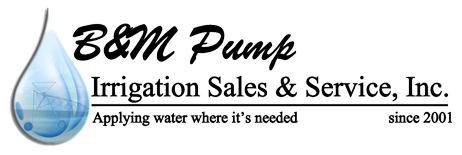Information About the Irrigation & Growth Cycle of Cotton
Anyone who farms and produces cotton is constantly focused on reaching their maximum yield potential in a given year. One of the most crucial factors in achieving that goal is proper irrigation. The type of irrigation strategies you employ depends primarily on the amount of rainfall you get in your area, the soil type you have on your farm and other such variables that you’ll need to take into account.
In addition, cotton farmers must understand that the water requirements for cotton change throughout the crop’s growth cycle. The requirements for water are greatest at peak bloom. Therefore, cotton growers must consider what sort of access to water they have, and plan to make sure they are able to provide adequate levels of irrigation during the most important growth periods of the year.
With this in mind, here’s a quick overview from our irrigation system company in the Southwest US about how the plant’s growth cycle affects the irrigation practices used:
- From planting to first square:
You typically don’t need to worry about irrigation from the time you plant the crop to the first emergence of the cotton plants. In more arid regions, you may need to do some irrigation before planting to create a proper water balance in the soil to support germination. However, if you water directly after planting, this will lower the temperature and potentially result in diseases forming in the seedlings. After germination, the seedlings will start to develop some roots, and having a water deficit at this time can actually encourage the roots to grow deeper to seek out water. - From first square to first flower:
This period lasts about three weeks. During this time, the potential fruiting sites (known as squares) are really starting to develop. The plants grow rapidly at this time, and irrigation should be used to supplement rainfall as needed to support the available water balance in the area. There must be sufficient water to prevent the plants from wilting. Once the signs of wilting appear, there’s already been enough stress done to the plant to damage its yield potential. - First flower to peak bloom:
Water requirements for cotton increase after blooming and peak during the third and fourth weeks of the bloom. A lack of water can cause some significant problems with the yield and with the quality of the crop. - Peak bloom to open bolls:
After the fourth week of blooming, the need for water starts to decrease a bit. When you will actually cease irrigation is going to vary, but in general, you want to provide one last irrigation when the bolls start to open. If you have a noticeable number of bolls that have opened, especially if they’re on lower plant nodes, this is when you should cut off irrigation practices.
For more information about the irrigation and growth cycles of the cotton plant, or for tips from an irrigation system company in the Southwest US, reach out to B&M Pump Irrigation Sales & Service, Inc. today.
Categorised in: Cotton, Irrigation
